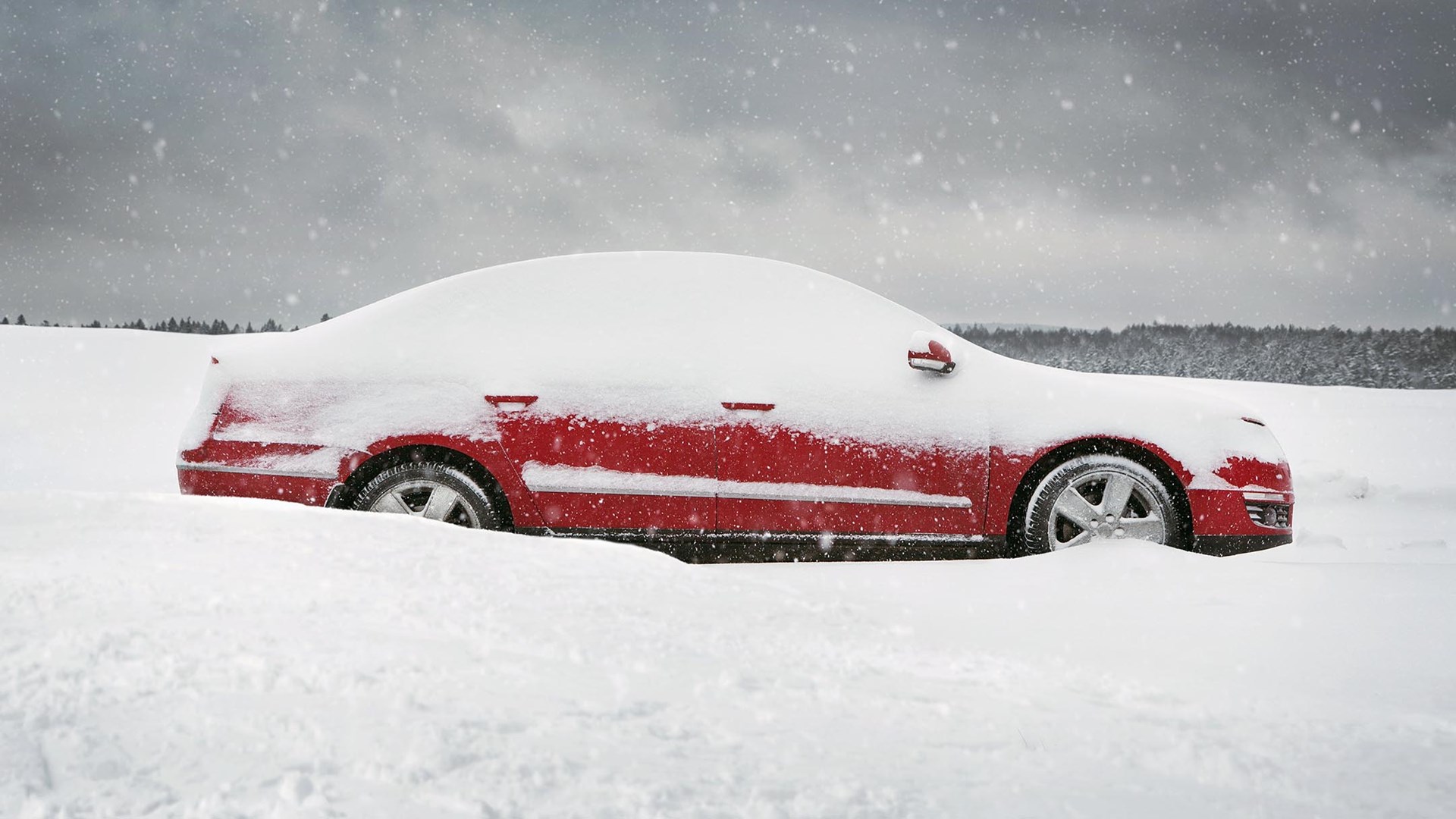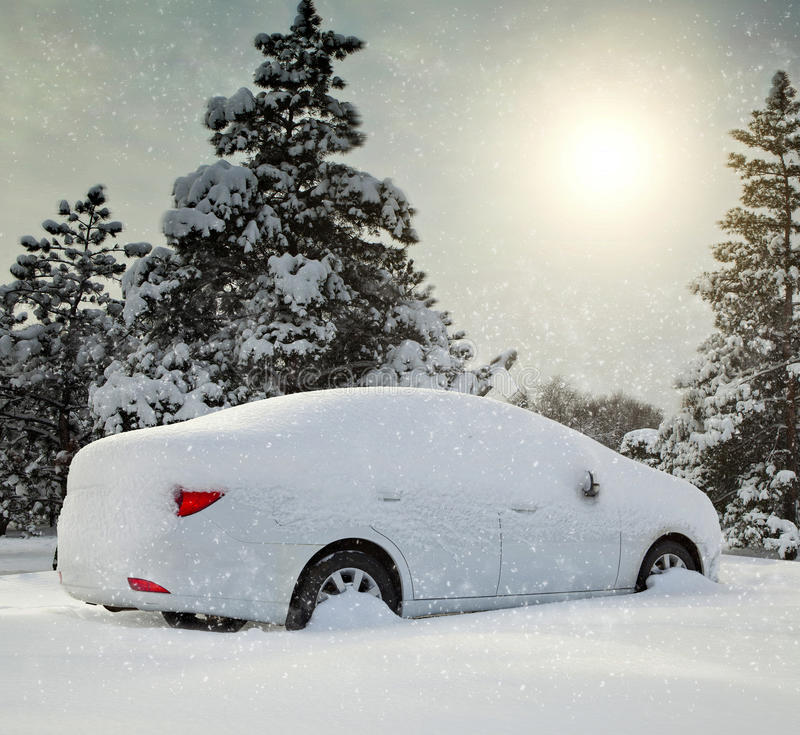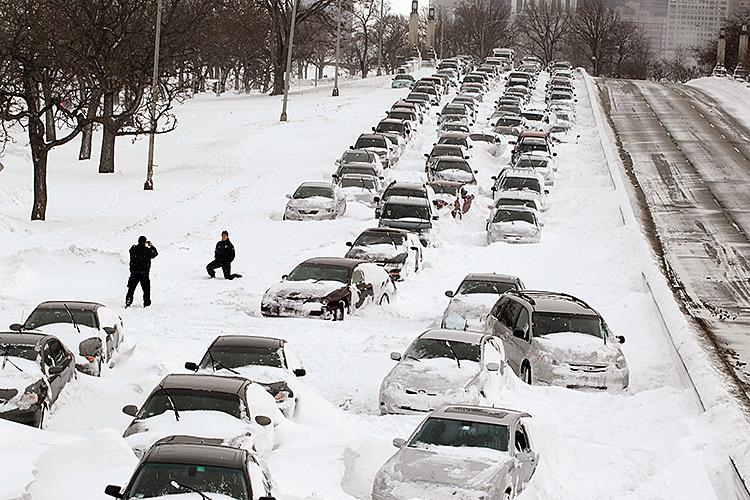After our initial stop in Nelson County Virginia, Elaine and I remain undecided about the next step in our extended south bound four-wheel winter walkabout. Will it be east to the Outer Banks or west across the Blue Ridge Mountains?
Regardless, events of January 4th in the Mid-Atlantic States reminded us of a harsh reality. WINTER CAN BE DANGEROUS! This realization came courtesy of a surprise winter storm that had frozen traffic cold, literally, for 50 miles on Route 95 in Virginia. It stranded unprepared drivers in snowbound vehicles for over 24-hours. In subsequent days new ice and snow storms as far south as the Carolinas made it clear that it did not stretch credulity that a February jaunt along the Blue Ridge Parkway or across the Carolina Piedmont could be interrupted by a powerful and unanticipated paralyzing storm. We would take the threat seriously and plan accordingly.
Tips on planning for the unexpected when winter turns ugly.
When blue highways turn white

The New York Times featured interviews with motorists that pretty much reflected the norm for unprepared travelers trapped and immobilized over night in the frigid grip of an unexpectedly severe winter storm. “It’s been so horrible,” said Arlin Tellez, 22 in an interview on Tuesday morning from her car stuck about 80 miles south of Washington, D.C. Ms. Tellez explained to the New York Times that she had been trapped in her car since 5 p.m. Monday without any food or water, and was layering on clothes she had in the car.
Unlike Ms. Tellez, Elaine and I intend to be prepared. While we envision our trip as a party, we do not have in mind the Donner Party. As such I have assembled the Drivin’ News Winter Wander-land Preparedness Guide.
Some items for a winter survival kit are self evident, others not so much. Special emphasis will be given for considerations that may not be common knowledge. A list of all unmentioned items comprising a winter driving survival kit will be completed at the article’s conclusion.
Non-traditional winter kit items
Coffee can space heater

It is cheap and it works. It basically requires four items, an empty, clean metal (it must be metal) coffee can, candles (metal cup tea light candles are cheap and work well), matches (waterproof or wooden stick matches are easier for cold, stiff fingers to use than a match book) and a heat resistant plate.
Position the can on a flat, stable, level, fire-resistant base. Place three or four tea candles in the bottom of the can. Once lit, the tea candles will burn for up to four hours.
If alone or with one other occupant in an SUV or large sedan consider reducing the space needed to be heated by duct taping a blanket from the headliner to the back of the front seat.
Non-lumping cat litter (5 lbs.) or carpet strips
Both provide improved traction when placed in the path of the drive wheels.
Whistle
In a blinding storm a strong whistle (120 dB and up) can alert help to your location.
Whiskey stones (Cubes of solid soapstone that when refrigerated will chill your bourbon without diluting it offer a great advantage for preventing water from freezing.)
Adding un-chilled whiskey stones to your water will help to keep it unfrozen, particularly in sub-zero temperatures. Other options include floating a ping-pong ball, a citrus peel, or another floating object that will keep the surface of your water from freezing completely over.
Bivy (Bivouac sack)
Inexpensive and rugged. Bivies pack very small, can weigh under 6 ounces and can be used as a survival blanket or sleeping bag. On the inside it has a reflective polyester coating, which can efficiently reflect up 90% of your body heat to help keep you warm even in the worst of conditions.

Cell phone walkie talkie app
Cell phone walkie talkie apps can provide the capability to turns your phone into a walkie talkie during any disaster and can help speed up rescue efforts once the storm has passed. Examples of apps: Zello, Two Way: Walkie Talkie
Newspaper
Provides great insulation when placed between skin and clothing
Crank, battery, outlet, solar power radio
Compact sized units provide AM/FM and weather bands. It includes cell phone charging jack. Contains emergency light.
LED headlight
Small high intensity light that straps around the head frees hands while providing powerful illumination.
When stranded snowbound or in blizzard conditions your safety, even your life may hinge not only on what you do but what you choose not to do.
Recommended DON’Ts
Do not panic.

Take a breath. You will think more clearly. Assess your situation. If you are within 75 to 100 yards of an occupied structure consider bundling up and making the trip. If not, set up camp in your vehicle. Hopefully after reading this article you will have some supplies on hand.
Three reasons to not drink alcoholic beverages
Danger #1 -Alcohol is a vasodilator.
Alcohol causes the blood vessels just below the skin’s surface to expand. This creates a false sensation of warmth while actually stealing heat from the vital organs and decreasing overall core temperature. Thus, alcohol overrides the body’s defenses against cold temperatures which is to constrict your blood vessels in order to keep your core body temperature up.
Danger #2 – Alcohol is a diuretic.
Alcohol causes you to urinate more. This speeds up dehydration and removes heat from your body.
Danger #3 – Alcohol impedes decision making abilities
Alcohol reduces the ability to make reasoned decisions. A bad decision in a life threatening situation is just that, life threatening.
Don’t drink coffee, tea or other beverages with caffeine
Coffee with caffeine may be hot but caffeine like alcohol is a diuretic. You will need to urinate more, thus, unnecessarily losing heat from the body.
Don’t go to sleep with the car running
A stranded car should never be left running for more than 10 minutes every hour. If no one is awake in a running car it can easily become a death chamber. Carbon monoxide, an odorless, colorless, and deadly gas produced by the engine can build up quickly inside a vehicle, poisoning anyone inside.
Recommended DOs
Stay with the vehicle. Yes, I know about Sir Ernest Shackleton and his Antarctic heroism. Few of us are Ernest Shackleton and in this day and age no reason exists for any of us to aspire through heroic efforts to prove we are.
Unless a home or building stands close and clearly reachable, stay put. The car provides shelter and protection. It is far more visible to searchers and by your having read this article it should contain supplies to help you survive until help arrives.
Clear exhaust pipe of snow
A blocked tail pipe can result in carbon monoxide entering the stranded vehicle.
Move supplies from trunk to car
As soon as you realize your situation, set up camp. Transfer all necessary supplies to where they will be easily accessible and not require going outside.
Colorful cloth on antennae
Tying a brightly colored cloth to an antennae or roof rack enhances the visibility of the vehicle.
Crack window
Leaving the two windows open slightly will assure ventilation and a supply of fresh air
Run engine a maximum of 10-minutes per hour
Run the engine sparingly to preserve fuel while generating and conserving heat.
Keep feet off floor or put paper or cloth down for insulation
Put paper or blankets on the vehicle floor or keep feet off the floor to protect loss of heat through feet.
Put on extra clothing right away
If you see that you are stranded, layer on all the clothes you have right away. Do not wait. Staying warm is much easier than getting warm.

Loosen tight clothing
Once fully dressed, loosen clothing tight to the skin. Loose cloths retain more body heat.
Remove metal jewelry
Metal jewelry can chill quickly and leach heat from your body.
Eat a snack of high calorie food before sleeping
Consuming a snack of high calorie food before sleeping will stimulate your metabolism and increase your heat production.
Tether yourself to car if you must go out
If you must leave the vehicle in a blinding snow storm tie yourself to the car with parachute cord (Paracord) or nylon rope so that you can find your way back to the vehicle.
Drink plenty of fluids
It is just as easy to become dehydrated on a cold day in winter as a warm day in summer. Dehydration makes a person more susceptible to the potential health hazards of cold weather.
Winter emergency kit content list (additional items)
Blankets
Plug in and solar cell phone charger
Chemical hand and foot warmers
Compass
First aid kit
Fresh batteries
Gloves
High energy food (Long shelf life)
Jumper cables
LED flashlight
Paper maps
Pen & Paper
Reflective triangle
Six-pack 30-minute road flares
Snow brush/ scraper
Shovel
Toilet paper
Tool kit w/Leatherman
trash bags (Large)
Warm clothes


Add a good book, maybe THE good book, you never know…
How true. You never know.
Great article Burton and one worth reading this time of year! But I should point out to your readers that these precautions do not only apply for road trips. Two years ago here in New Jersey we had an unexpected mini-blizzard one afternoon in November that dumped about 4 inches of ice and snow in about a half an hour! My wife and I had just gone to a food store about 5 miles away. We had one main road that includes a reasonably steep hill on the way home. We were doing just fine in our all-wheel drive Volvo XC70 as we approached the hill. But many people in front of us were not prepare, either in terms of having the right vehicles and tires, or in having the driving skills necessary to get moving and stay on course in the rapidly accumulating snow.
We ended up stopped at a place on the incline where the road is divided and each side is two lanes wide. The people in front of us were just spinning their wheels and sliding sideways. They were blocking both lanes, so even if the town sent out a plow with a salter/sander it would not be able to get up the hill….as both lanes were blocked with stalled cars.
I got out of our car and walked up to the cars that had started the blockage at the top of the hill. I tapped on their window and told then I would push them to help them get moving. If they felt they could not control their car….then when they got going they should simply pull over to the right lane and wait for the plow to come through. If they felt after they got moving they could proceed, then just drive home….slowly!
After getting about 4 cars moved, another driver joined me in pushing the stuck cars to get them moving and either on their way home, or simply out of the fast lane….leaving it open for the plow.
In a half an hour, pretty much all the cogention was cleared up. The fast lane was open for the plow truck to get through. Most of the people, with the assistance of a push (and some coaching) got their cars up the hill. And when the plow came through, even the previously stuck cars could make it into the plowed lane to get home. And in our case, we were only about one single mile from our home.
Remember I started by saying you need to be prepare even on short winter drives like this one? Well, when we went to the store that day, I hadn’t put any gloves on. Why should I? I was only going a few miles to pick up groceries! After pushing cars in a blizzard for a half an hour, I had some real nerve and blood vessel damage in both hands. So now in the winter, I always bring my gloves!
Excellent observation. Being close to home does not eliminate the need to be prepared.